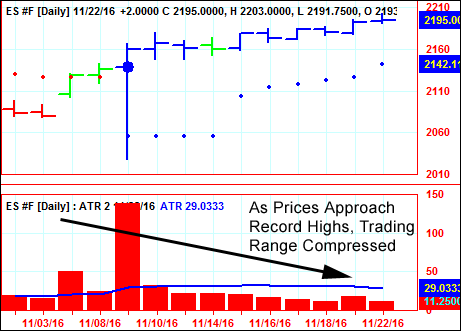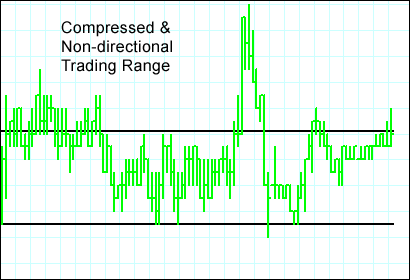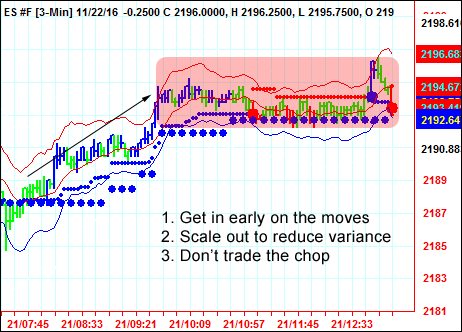Trading Profitability Despite Low Volatility?
There is the feeling here & from user feedback that trading has gotten really good post-election, yet the numbers don’t reflect profitable market conditions. The TLDR (too-long-didn’t-read) version is over here in form of a short clip: https://www.youtube.com/watch?v=FmZjWSIF8EA
First, we found that not only did trading ranges not expand post-election, they have actually been compressed further.
We see the same story in the $VIX, as all major
US stock indices have gone to break record highs.
What do These Vol Metrics Mean to Us?
The reason we typically associate volatility with better trading opportunities is expanding trading range. Expanding trading range means that prices are making bigger moves up or down. There’s the opportunity to catch a bigger move when the range is 20 points, vs when the range is 10 points.
Trading losses & costs feel less consequential when they are easily made up for by a big winner. But what if the winners don’t materialize? To help illustrate this idea, consider the opposite: a range bound market, where prices can only go up or down a little bit before the stop or turn around.
Smaller range requires greater precision
If the range is smaller, you would need to get in earlier on any potential moves to be profitable because after the first bit of open profit, they aren’t likely to go much further. More importantly, you’d need to know when not to trade, because most of the time the price action is just going to turn around. Add in cost of trading and any gains are easily eaten up by more trading. Traders call this ‘churn’.
So how is it we’ve felt trading has been good, when vol metrics have been very low?
The answer comes in 3 parts:
- Day time price action
- Quick/sharp moves
- No Trade Zones helped to retain profit
Day time price action
We’ve got to have a shot at trading the moves. The market can be moving, but if all the price action is overnight, indices open up on a gap and trade a tiny range all day, as we saw in 2013. We have had a shot at the moves recently. As an example, in ES (S&P500 e-mini),we only had an 18 point range, but 10 points of that range occurred during the day.
Taking profit off the table
We use a best practices of taking some profit off the table when prices are getting extreme. We use STARC or Bollinger Bands to objectively define when are prices moving too quickly.
In limited range markets, that parabolic move can easily be followed by a reversal or congestion(nothing). Not only that, it’s generally a good practice to take some off because it turns the remaining exposure into a free roll on a big price move.
No Trade Zone helped to Retain Profit
As we said previously, the smaller range makes losses and costs more consequential & that it requires greater precision to be profitable. That’s precisely why we say that it’s in these kind of market conditions that AbleTrend really shines.
Using AbleTrend guidance charts, we’re able to see ahead of time, when the short-term and long-term signals are in disagreement. That answers the question of when not to trade. Also, it does this, without keeping us from taking positive exposure when there are big moves.
We will still look forward to expanding volatility, but thus far, the directional price action has been pretty good.



Leave a Reply
You must be logged in to post a comment.